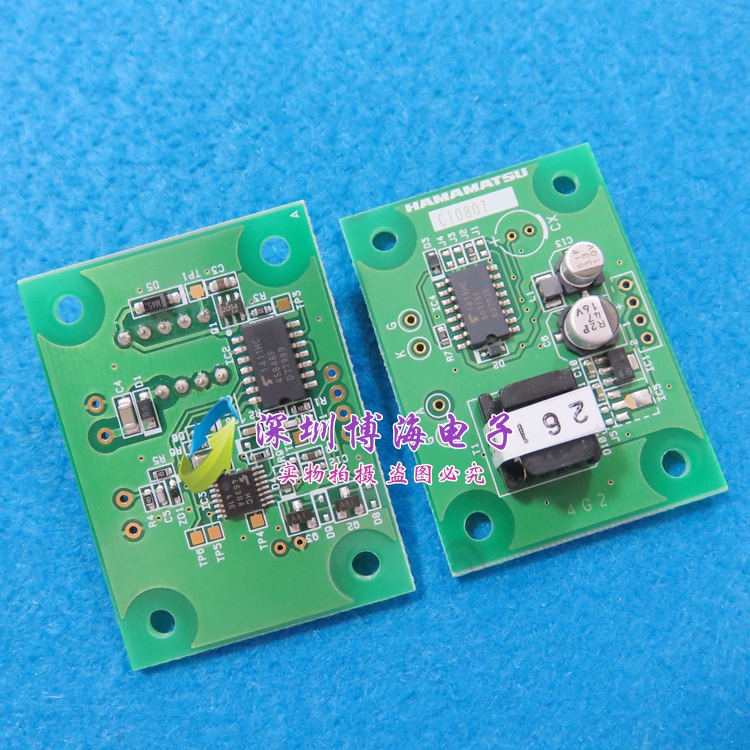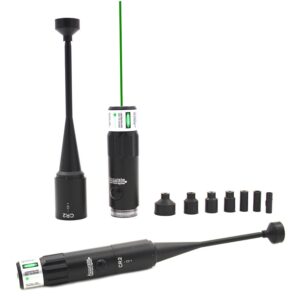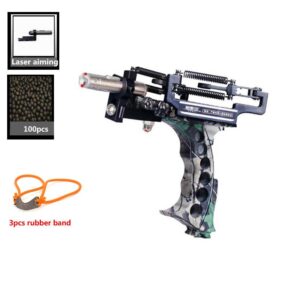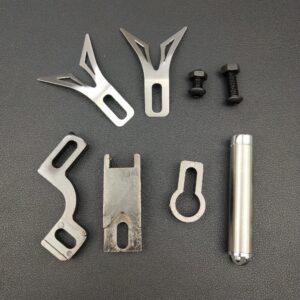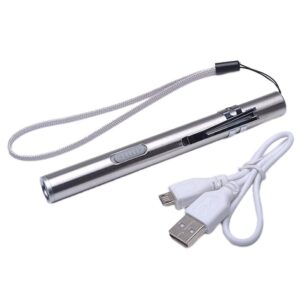Description
- Compatible Brand/Model: None
- Model Number: yes
- is_customized: yes
- With USB: yes
- Brand Name: MXRSDF
Principle of the flame sensor
The flame sensor can detect infrared light with a wavelength in the range of 700 nm to 1000 nm, and the detection angle is 60, wherein the sensitivity of the infrared light wavelength near 880 nm is maximized. The far-infrared flame probe converts the change of the intensity of the external infrared light into a change of the current, which is reflected by the A/D converter as a change in the value in the range of 0 to 255. The stronger the infrared light is, the smaller the value is; the greater the opposite.
Function description of the flame sensor
The flame sensor was first used by the robot to search for the source of the fire. Of course, the flame sensor can also be used to detect the brightness of the light, but the sensor is particularly sensitive to the flame. The flame sensor uses infrared rays to be very sensitive to flames, uses a special infrared receiving tube to detect the flame, and then converts the brightness of the flame into high-level and low-level signals, which are input into the central processor, and the central processor changes according to the signal. Make the corresponding program processing.
Flame sensor application
Flame sensors are mainly used in fire and fire protection systems, especially in inflammable and explosive places to detect the generation of flames. At the same time, the sensor can also be used in fire alarm systems for engines, boilers, furnaces, etc.
Flame sensor
The flame transducer flame is composed of various high-temperature solid particles mainly composed of various combustion products, intermediates, high-temperature gases, hydrocarbons, and inorganic substances. The thermal radiation of the flame has a discrete spectrum of gas radiation and a continuous spectrum of solid radiation. The flame radiation intensity and wavelength distribution of different combustion products are different, but in general, the near-infrared wavelength range corresponding to the flame temperature of 1 to 2 μm has the largest radiation intensity. For example, the wavelength of the flame radiation intensity when gasoline is burned…
Function Description
The flame sensor is a sensor that the robot uses to search for the fire source. Of course, the flame sensor can also be used to detect the brightness of the light, but the sensor is particularly sensitive to the flame. The flame sensor uses infrared rays to be very sensitive to flames, uses a special infrared receiving tube to detect the flame, and then converts the brightness of the flame into high-level and low-level signals, which are input into the central processor, and the central processor changes according to the signal. Make the corresponding program processing.
Far infrared flame sensor
Functional use: The far-infrared flame sensor can be used to detect fire sources or other heat sources with wavelengths ranging from 700 nm to 1000 nm. In the robot competition, the far-infrared flame probe plays a very important role, it can be used as the robot's eye to find the fire source or football. It can be used to make fire fighting robots, soccer robots, etc.
Principle introduction: The far-infrared flame sensor can detect infrared light with a wavelength in the range of 700 nm to 1000 nm, and the detection angle is 60. When the infrared light wavelength is around 880 nm, the sensitivity is maximized. The far-infrared flame probe converts the change of the intensity of the external infrared light into a change of the current, which is reflected by the A/D converter as a change in the value in the range of 0 to 255. The stronger the infrared light is, the smaller the value is; the weaker the infrared light, the larger the value.
Instructions for use:
The installation of the far-infrared flame sensor is shown in the figure below. Pay attention to the following points when installing and using:
a. Remove the photosensor from the robot and connect the far infrared flame sensor directly to the photosensitive interface.
b. The pin of the far-infrared flame sensor is polar. When installing, connect the red wire to the position marked “+” on the main board; if there is no response during use, just reverse the sensor.
c, in the graphical programming, directly with the "brightness detection module" control; in the code box programming, use the function photo (1) and photo (2) detection.
d, the working temperature of the far-infrared flame probe is -25 degrees Celsius to 85 degrees Celsius. During use, the flame probe should not be too close to the flame to avoid damage.
Infrared ranging sensor works:
The infrared ranging sensor uses the principle that the intensity of the different reflections of the infrared signal encountering the obstacle distance is different, and the detection of the distance of the obstacle is performed. The infrared ranging sensor has a pair of infrared signal transmitting and receiving diodes, the transmitting tube emits an infrared signal of a specific frequency, and the receiving tube receives the infrared signal of the frequency. When the infrared detecting direction encounters an obstacle, the infrared signal is reflected back and received. After receiving the tube, after processing, returning to the robot host through the digital sensor interface, the robot can use the infrared return signal to identify changes in the surrounding environment.
2.3.1 Infrared ranging sensor:
Infrared obstacle avoidance sensor (hereinafter referred to as infrared). The infrared has a pair of infrared signal transmitting and receiving diodes, the transmitting tube emits an infrared signal of a certain frequency, and the receiving tube receives the infrared signal of such frequency, and when the infrared detecting direction encounters an obstacle (reflecting surface), the infrared signal is reflected back Receiver tube reception, after processing, return to the robot host through the digital sensor interface, the robot can use the return signal of the infrared wave to identify changes in the surrounding environment.
According to the requirements of the game, the distance between the infrared sensor and the receiving sensor is measured. According to the difference between the infrared light output voltages of the two infrared sensors on the left and the right sides of the vehicle body, the orientation of the ball is guided to guide the direction of the car body, and between the car body and the wall. the distance.
Infrared receiver circuit diagram
When the phototransistor receives the infrared signal, its resistance decreases, the voltage division at both ends of the tube decreases, and the output port voltage rises, and is input to the AD conversion chip for conversion.
Yes, you have to see how much distance it is!
The distance factor is an important parameter of the infrared thermometer.
The distance coefficient is determined by the ratio of D:S, which is the ratio of the distance D between the probe probe to the target and the diameter of the target to be measured. If the thermometer must be installed away from the target due to environmental constraints, but to measure small targets, you should choose a high optical resolution thermometer. The higher the optical resolution, ie the higher the D:S ratio, the higher the cost of the thermometer. If the thermometer is far away from the target and the target is small, the thermometer with a high distance factor should be selected. For a fixed focal length thermometer, the spot is at the minimum position at the focus of the optical system, and the spot is increased near and farther than the focus position, and there are two distance coefficients. Therefore, in order to accurately measure the temperature at a distance close to and away from the focus, the size of the target to be measured should be larger than the spot size at the focus; the zoom thermometer has a minimum focus position that can be adjusted according to the distance to the target. When D:S is increased, the received energy is reduced. If the receiving aperture is not increased, the distance coefficient D:S is difficult to increase, which increases the instrument cost.
Can the external distance sensor GP2Y0A02YKOF measure objects within a certain range of angles? If so, what is the measurement angle?
Baidu Encyclopedia said that the measurement range is generally 1-5 kilometers.
But some are used for precision measurement, the range is small, but the precision is high.
The principle of non-diffusion when using infrared radiation is because the infrared index has a small refractive index when passing through other substances, so long-distance range finder will consider infrared rays and the propagation of infrared rays takes time. When infrared rays hit the reflector from the range finder It is reflected back by the range finder and can be calculated according to the time from the emission to the received time and the speed of the infrared ray. The rangefinder of the US Bushnell infrared range finder is mainly divided into three categories: laser measurement. Distance meter, ultrasonic range finder, infrared range finder, we introduce the analysis of the principle of range finder also mainly introduce these three. 1. Laser range finder Laser range finder is an instrument that uses laser to accurately measure the distance of a target. The laser range finder emits a very fine laser beam to the target during operation. The photoelectric component receives the laser beam reflected by the target, and the timer measures the time from the transmission to the reception of the laser beam to calculate the distance from the observer to the target. The laser range finder is currently the most widely used range finder. The laser range finder can be classified into a handheld laser range finder (measuring distance 0-300 meters), and a telescope laser range finder (measuring distance 500-3000 meters). . 2. Ultrasonic range finder The ultrasonic range finder is measured based on the characteristics of the ultrasonic waves reflected back from obstacles. The ultrasonic transmitter emits ultrasonic waves in a certain direction, and starts timing at the same time as the transmission. The ultrasonic waves propagate in the air, and immediately return to the obstacle when the obstacle is encountered on the way, and the ultrasonic receiver immediately stops interrupting the timing when receiving the reflected wave. By continuously detecting the echoes reflected by the obstacles after the wave is generated, the time difference T between the transmitted ultrasonic waves and the received echoes is measured, and then the distance L is obtained. Ultrasonic range finder, because the ultrasonic wave is greatly affected by the surrounding environment, the general measurement distance is relatively short and the measurement accuracy is relatively low. The current range of use is not very broad, but the price is relatively low, generally a few hundred yuan. 3. Infrared range finder An instrument for precise ranging using modulated infrared light. The range is typically 1-5 km. It uses the principle of non-diffusion when transmitting infrared rays: because infrared rays have a small refractive index when passing through other substances, long-distance range finder will consider infrared rays, and the propagation of infrared rays takes time when infrared rays are emitted from the range finder. When the reflector is reflected back and received by the range finder, the infrared ray distance can be calculated according to the time from the emission to the received time and the infrared ray propagation speed. The advantages of the infrared distance measurement are cheap, easy to manufacture, safe, and the disadvantage is low precision. The distance is short and the direction is poor.
SharpEyeTM 20/20L and 20/20LB UV/IR UV/IR Flame Detectors (BIT)
·Using an ultraviolet sensor that is not sensitive to sunlight, plus a narrow-band infrared sensor.
· Provides excellent detection sensitivity and improves immunity to false alarms (light blindness).
· Provide high-speed and high-performance flame detection alarms for military industry and industry.
· Detects hydrocarbon combustion flames such as hydrogen, hydroxy compounds, and metal and inorganic combustion flames.
• Monitor UV and IR narrowband spectral frequencies.
· The sensor ensures that it is highly sensitive to the emission spectrum produced by the flame.
At the same time, it has immunity to the emission spectrum generated by the fireless micro-smoke.
The UV sensor integrates logic to prevent false alarms from solar radiation.
· The detection range of the IR sensor is 2.5~3.0 microns. The frequency, brightness, and frequency of the detector's signal to the UV and IR sensors
• Duration analysis, any sensor can trigger an alarm after receiving the flame emission spectrum.
Characteristics
• UV/IR dual spectrum detection
• High speed flame detection
• 20 second response to dark signals
• User settings feature
• High false alarm immunity (light blindness)
• Automatic or manual calibration function (BIT)-LB
• Standard 4-wire connection
• 4-20mA or 3-4 line output
• Minimum mean time between failures of 100,000 hours
• 3-year warranty
• FM, CSA, ATEX/Genelec & Gost R certification
Spectral range
VU: 0.185~0.260 microns
IR: 2.5~3 microns
examination range
Gasoline 50ft (15m)
N-heptane 50ft (15m)
95% alcohol 37ft (11m)
Diesel 37ft (11m)
JP4 37ft (11m)
Kerosene 37ft (11m)
Methane 15ft (4.5m)
(propane) 15ft (4.5m)
Reaction time
5 seconds (standard)
Adjustable delay
30 seconds maximum (20 seconds optional)
Monitoring range
90o vertical, 90o horizontal
Self-test function
Manual or automatic self-test
Temperature requirement
Operating temperature: -40oF (-40 oC) ~ 160oF (70 oC)
Operating temperature (optional): -40oF (-40 oC) ~ 185oF (85 oC)
Storage temperature: -65oF (-55 oC) ~ 185oF (85 oC)
humidity
95%
Electronic technical parameters
Operating Voltage
18-32VDC
Working current
Standby state: 150Ma (maximum)
Alarm status: 200Ma (maximum)
Cable guide
2╳3/4′′-14NPT or 2╳M25╳1.5mm ISO
Circuit protection
Meets MIL-STD-1275A standard
Electromagnetic Compatibility
EMI/RFI protected CE Marked
Output
Relay output
Alarm: -2A @30 VDC 0.5A @250 VAC
Failure: -5A @30 VDC/250VAC
Failed relay output: normally closed; other: normally on
4-20Ma
Failure: 0 +0.5 mA
BIT Fault: 2mA ±10%
Normal (Normall): 4 mA ± 5%
Infrared (IR Detection): 8mA ± 5%
UV Detection: 12mA ± 5%
Warning: 16 mA ± 5%
Alarm: 20 mA ± 5%
Loop resistance (Resistance loop): 100-600 Ohm
Physical property
Dimensions
4.7" x 5.2" x 5.2" (120 x 132 x 132 mm)
weight
Aluminum: 8.1Lb (3.7 Kg)
Stainless steel (St. St 316L): 14.3Lb (6.5 Kg)
Applicable environment
Meets MIL-STD-810C standards. Used in high humidity, high salt, vibration, mechanical vibration, high temperature and low temperature environment.
Protective performance
IP66 and IP67 per En60529
NEMA 250 6P
